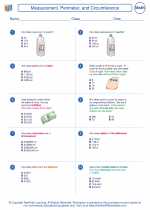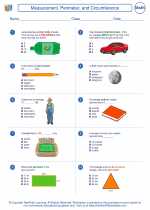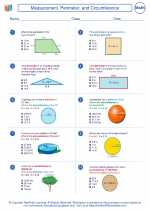Prism: Explanation and Study Guide
What is a Prism?
A prism is a three-dimensional shape that has two parallel and congruent polygonal bases, with their corresponding sides connected by parallelograms. Prisms are named based on the shape of their bases. For example, a prism with a triangular base is called a triangular prism, and a prism with a rectangular base is called a rectangular prism.
Types of Prisms:
- Triangular Prism: A prism with triangular bases.
- Rectangular Prism: A prism with rectangular bases.
- Pentagonal Prism: A prism with pentagonal bases.
- Hexagonal Prism: A prism with hexagonal bases.
- and so on.
Properties of Prisms:
Here are some important properties of prisms:
- Bases: The two parallel polygonal bases are congruent and lie in parallel planes.
- Lateral Faces: The sides of the prism that connect the corresponding sides of the bases are called the lateral faces. The number of lateral faces is equal to the number of sides in the base shape.
- Height: The perpendicular distance between the two bases is called the height of the prism.
- Volume: The volume of a prism can be calculated using the formula: V = Base Area × Height, where the base area is the area of one of the bases.
- Surface Area: The surface area of a prism can be calculated by adding the areas of the two bases and the lateral faces. The formula for the surface area of a prism varies based on the shape of the bases.
Example Problems:
Let's solve a couple of example problems to understand prisms better.
Example 1:
Find the volume of a rectangular prism with a length of 5 units, width of 3 units, and height of 4 units.
Solution:
To find the volume of the rectangular prism, we use the formula V = Base Area × Height. The base area is the area of the rectangle, which is length × width. Therefore, V = 5 × 3 × 4 = 60 cubic units.
Example 2:
Calculate the surface area of a triangular prism with a base edge of 6 units, height of 8 units, and side length of 10 units.
Solution:
The surface area of a triangular prism can be calculated using the formula: 2 × Base Area + Base Perimeter × Height. The base area of the triangular base is 1/2 × base edge × height, which equals 1/2 × 6 × 8 = 24 square units. The base perimeter is the sum of the three sides of the triangle, which is 6 + 6 + 10 = 22. Therefore, the surface area is 2 × 24 + 22 × 8 = 192 square units.
Conclusion:
Prisms are important geometric shapes with various applications in real life. Understanding the properties and formulas related to prisms can help in solving problems related to volume, surface area, and other geometric calculations.
.◂Math Worksheets and Study Guides Seventh Grade. Measurement, Perimeter, and Circumference

 Worksheet/Answer key
Worksheet/Answer key
 Worksheet/Answer key
Worksheet/Answer key
 Worksheet/Answer key
Worksheet/Answer key
